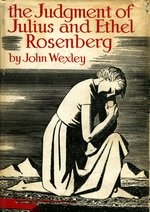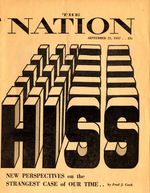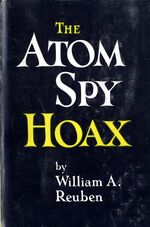For the United States, espionage was a fact of war. Information was a commodity just as important as steel or oil, and the United States worked hard to keep it protected. Despite the Soviet Union's wartime designation as an ally, Russian espionage had long been a concern for American political and military officials. And as was discovered after the war, that fear was well placed.1
In 1941 Klaus Fuchs, a German refugee scientist, was tapped by the British government to work on war projects on behalf of the effort against Nazi Germany. He agreed and was given British citizenship in 1942. Unbeknownst to his British superiors, Fuchs was an active member of the German Communist party who, following the German invasion of the USSR, had made arrangements to pass British military secrets to his Soviet contact Ruth Werner, codenamed "Sonia."
Operating under the alias "Rest," Fuchs was transferred to the Manhattan Project in 1943 where he proved useful to the U.S. bomb effort, conducting calculations, creating techniques such as the Fuchs-Nordheim method of calculating potential atomic energy release, and even patenting an atomic method of detonation using a shaped implosion. Through personal meetings with Harry Gold, a Swiss chemist, Fuchs transmitted much of this information, along with the details of the atomic bomb's basic construction, to his superiors in Russia.
Fuchs was ultimately caught and found guilty of espionage in 1950. In order to reduce his sentence, he helped to identify his accomplice Harry Gold, who in turn served as a key witness against David Greenglass and Julius and Ethel Rosenberg, a family of accused Communist spies alleged to have transmitted atomic weapons data to the Russians.
The extent of the Soviet spy ring, as exposed in Fuch's confession, was enough to send the American public into a panic.2 This shared hysteria led to a national fixation on the Rosenberg trial, which proved to be the most sensational of the atomic spy cases. Presiding Justice Irving Kaufman condemned the Rosenbergs, stating:
I believe your conduct in putting into the hands of the Russians the A-Bomb years before our best scientists predicted Russia would perfect the bomb has already caused, in my opinion, the Communist aggression in Korea, with the resultant casualties exceeding 50,000 and who knows but that millions more of innocent people may pay the price of your treason.
The Rosenbergs were sentenced to death and, following protests around the world, were executed on June 19, 1953.3 Their trial and deaths proved to be the ultimate catalyst in the Red Scare, leading to the defamation of hundreds of American artists, intellectuals, and government employees.4
Notes
- 0572. Gellhorn, Walter. Security, Loyalty, and Science. Ithaca: Cornell U. Press, 1950. UB270 .G4. Return to text ↑
- 0581. Reuben, William A. The Atom Spy Hoax. New York: Action Books, 1955. HD9698.A28 R4. Return to text ↑
- 0590. Wexley, John. The Judgement of Julius and Ethel Rosenberg. New York: Cameron & Kahn, 1955. KF224.R6 W4. Return to text ↑
- 0583. Root, Johnathan. The Betrayers. The Rosenberg Case - a Reappraisal of an American Crisis. New York: Coward McCann, 1963. HX84.R6 R6 1963. Return to text ↑



